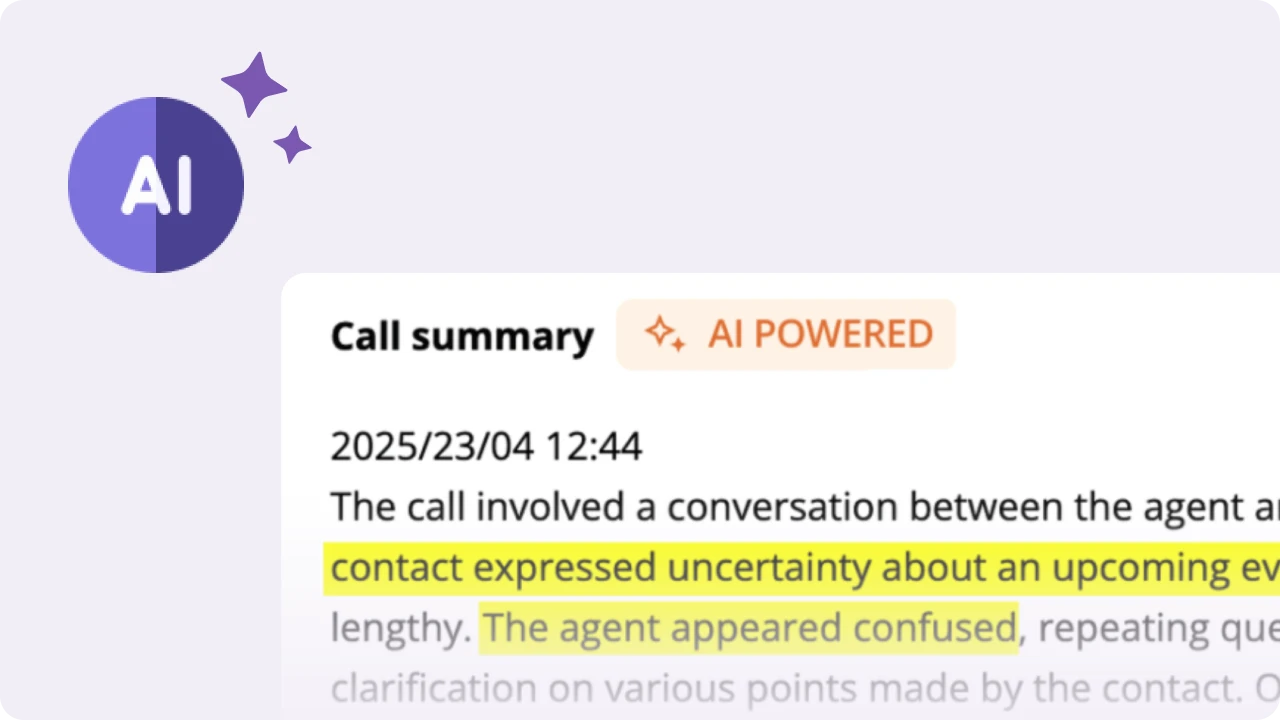Table of Contents
In 2014 ‘An Hour of Code’ online fundraising campaign launched by the nonprofit Code.org raised more than $ 5 Million. It is considered to be one of the most massive crowdfunding campaigns ever!

The campaign saw stalwarts like Mark Zuckerberg and Priscilla Chan, John and Ann Doerr, and Rich Barton donate over $1 million to the cause.
Why was it so successful?
Instead of traditional fundraising methods like direct mail and events, Code.org looked to online fundraising to meet its goals.
In this post, we shall examine what online fundraising is and how it can work for you.
What is online fundraising?
Online fundraising is when the internet is used to raise funds. It can be via websites, blogs, online donation forms, mobile giving, or even crowdfunding campaigns.
Code.org used Youtube to tell people about their mission, collected money online via donation forms on the website, and also used Indiegogo – a crowdfunding platform to appeal to more donors.
If you would like to replicate their success and get started with online fundraising for your nonprofit, then this post can help. From explaining how online fundraising works and the various advantages it has, this post covers all the essentials you need to know.
How does online fundraising work?
Regardless of the kind of online fundraising campaign you run, how it works can be summarized in three steps.
- Your nonprofit uses a platform (a third-party tool) to reach out to new (or existing) donors via the internet.
- If the donors want to help, they directly contribute money to your bank account through an online transaction.
- The platform you use will charge you a base fee per transaction (differs for each tool), and the rest is credited to your account for your immediate use.
Based on how you choose to reach your donors, the kind of c$ampaigns you can run vastly differ. Here is a quick summary of how each of them works.
Online fundraising via Online giving
Online giving is when you encourage prospects to give through an online donation page. The donation page contains your nonprofit’s mission and vision. It also has a donation form through which donors can send in their contribution.
How does online giving work?
In this method of online fundraising, prospects give to your nonprofit directly from your donation page. Or, they could be checking your nonprofit website and if they want to support your cause, come to the donation page to donate. Here is an example of a donation form by Children’s Minnesota.

Once on the page, they fill in the form details and specify how much they want to contribute.
After they confirm their gift, they get redirected to the payment page where they can complete the transaction (just like any other online purchase).
Depending on the kind of platform you use, a small portion of this transaction can be taken up as platform fees. The remaining is credited to your account.
When should you use online giving?
Online giving is not a separate campaign – but a way to diversify your fundraising sources. That means, the funds you collect via the online donation form need not be for a specific campaign, but towards your annual fund.
If you have multiple campaigns, then you may want to set up exclusive donation pages for each of these campaigns. For instance, annual fund campaign will be very different from a specific campaign.
Quick tip: Pages that load quickly, provide a compelling reason to give, and are easy to fill are those that perform the best. Here are a few examples of high performing donation pages.
Online fundraising via Crowdfundraising
In the last few years online fundraising for nonprofits via crowdfundraising has become quite popular. When you approach a large number of donors online for small contributions, it is called crowd fundraising. Each of these campaigns, set up on a third party platform, is timed. Every prospect who visits the page can track the progress of the campaign and choose to either contribute or not.
While it is true that a majority of crowdfundraising is for Businesses, social causes are the second most popular category. So if you do choose to raise money by a crowdfunding campaign, don’t be deterred thinking it is only for entrepreneurs. Your cause could get funded too! Check out the numbers:
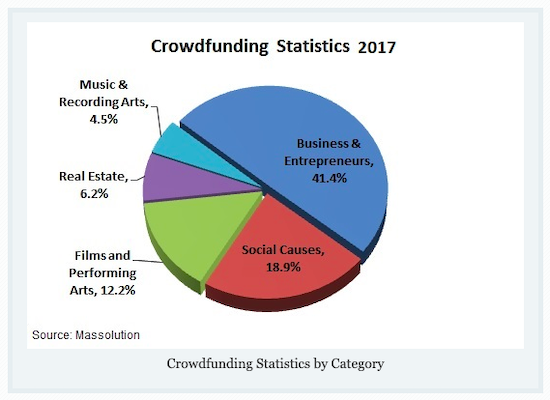
How does crowdfundraising for nonprofits work?
Crowdfunding harnesses the power of social sharing to solicit funds from prospects. The campaign you set up will always be donation-based crowdfunding, where you do not enjoy any monetary benefit. Once you set up a campaign, you promote it to everyone in your network – and encourage them to donate and share it with theirs.
A prospect will land on your campaign page and see all the relevant details (like the mission, vision, and how far you have come to achieving your goals.)
If he decides to contribute, he can do so at the click of a button.
When should you use crowd fundraising?
Crowd fundraising works best to address specific, urgent needs within your organization. It is not a stand-alone campaign, but is in conjunction with your other fundraising efforts.
Quick tip: In some crowdfunding campaigns, if you do not meet the target goal specified, the donors who contributed get their money returned. Carefully check the funding guidelines before launching your campaign.
Online fundraising via Peer-to-peer fundraising
The basic idea of peer-to-peer fundraising remains the same: donors reach into their network of friends, family, and acquaintances to raise money for your cause. Instead of doing it door to door, they can now do it via customized fundraising pages online (rather similar to donation pages).
How does peer-to-peer fundraising online work?
Typically peer-to-peer fundraising are time-based campaigns that are used in conjunction with an event (e.g., a marathon or a bake-sale).
If you want to make it more competitive and raise money quickly, you can opt for peer-to-peer giving days. In this version, every donor has a 24hr time window to raise as much money as he can. Since it comes across as a challenge, it would be more fun for your donors to raise money this way.
If your organization does not have such a time constraint and want the funds raised for a more generic goal (for your annual funds rather than a specific campaign), you can have a rolling peer-to-peer campaign that works all-the-year-round.
Regardless of the type of peer-to-peer campaign, how it works is the same. You set up a peer-to-peer campaign page via a third-party tool. You also enable your donors to set up their own donation pages that link back to your campaign page.
The donors then share their donation pages within their network to raise funds. The money every donor gives goes directly to your campaign, minus the platform fees.
A common misconception is that crowdfunding and peer-to-peer campaigns are similar. Though they share the element of social sharing to raise funds, the way both these campaigns work is different. Here is a representation of how they differ:
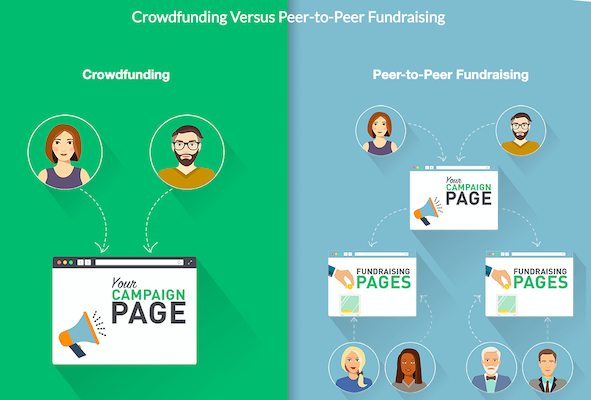
A crucial difference in both these fundraising types is that crowdfunding can be done by individuals – for a cause of their choosing. A peer-to-peer campaign, on the other hand, is towards a particular nonprofit. The participating donors do not keep the money they raise and direct it towards the mission they care about.
When should you use peer-to-peer fundraising?
Opting to raise funds via a peer-to-peer campaign is a decision that should also be based on organizational readiness. For a successful peer-to-peer fundraising campaign, your nonprofit should have:
- A circle of invested donors who are willing to raise money on your behalf
- Ample resources to train the volunteers who opt to raise money for you
If you have both the above covered, then you can run peer-to-peer campaigns to support and amplify an existing fundraising effort.
Quick tip: Like any other online fundraising effort, peer-to-peer fundraising also works best only if it is linked to another ongoing campaign.
Online fundraising via Mobile Giving
One of the most popular forms of online giving, mobile giving encourages prospects to give directly via their cell phone.
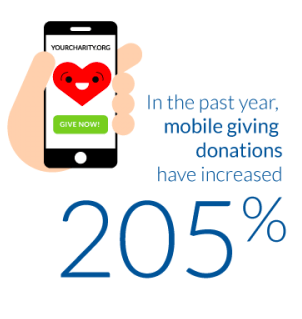
If you immediately think of text-to-give, then you are not wrong. However, mobile giving also encompasses mobile-responsive emails, donation pages, and peer-to-peer campaigns (basically anything goes – as long as the final transaction happens via mobile).
How does mobile giving work?
Let us look at mobile giving in the context of text messages. Mobile numbers of supporters are collected via your organization’s website online. It could happen via forms when they sign up to volunteer or pledge their support or even make a donation.
Once you have their number, a volunteer can reach out to them via a personalized text and request a contribution. Here is how the conversation can go:
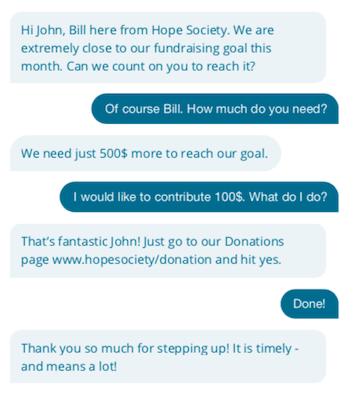
Outside the context of text messages, mobile giving is whenever donors use their mobile phones to donate. So sending follow up emails, sharing donation pages (on WhatsApp as well) and making your website mobile-friendly all tie into mobile giving.
Quick tip: 25% of donors complete their donations on their mobile phones. So ensure that all your campaigns are mobile-friendly.
When should you use mobile giving?
Short answer: All the time, every time!
When it comes to using mobile as a medium to donate, it should be a part of every campaign. For instance, when you set up a crowd fundraising campaign, you have to anticipate that a majority of your donors will be viewing it via their mobile phones. So ensure all your campaigns have a good mobile giving experience.
In the context of using text messages to give, you can approach donors with whom you already have a relationship with. Instead of blasting every donor on your list with a bulk SMS, you can reach out to them via a personalized text and encourage them to give (this is called peer-to-peer texting.)
Online fundraising via Matched Giving
Matched giving is usually for corporate donations, where big companies pledge to match the dollars raised (refer to The hour of code campaign).
It comes under online fundraising because of when you ask the prospects to support matched giving.
Right after a donor completes an online donation, you reach out to the donor on the same page and ask him whether his employer can match the money they just donated. Since this ask happens online, matched giving can be considered a part of online fundraising (usually as a way to amplify the funds collected).
How does matched giving work?
Once a donor contributes a gift to your nonprofit, you request them to check for matched giving programs with their employer.
If the donor is interested, he/she can reach out to their employer and file the necessary documentation for the matched giving program.

Unlike other nonprofit fundraising campaigns, matched giving programs can only be taken forward by the donors. That is, after making the donation, the donors approach their employers with a request to match the funds.
As a nonprofit, you do not have much transparency into the process and can only send reminders and check with the donors about the progress of their request.
If the donor’s request is within the employer’s guidelines, then they can choose to match their employee’s donation at a 1:1 or 1:2 ratio.
Quick tip: The prompt to check for a matched giving program can be done with a plug-in, that pops up as soon as their donation is complete.
When to use matched giving program?
Matched giving programs are not run as a separate fundraising effort. Rather, it is one more way to amplify the amount of money for each campaign.
That means you can use a matched giving program for every campaign! Donor engagement is maximum right after they have made a donation. So make the ask for a matched gift right then!
Related Reading: Writing the Perfect Nonprofit Fundraising Plan – In 10 Easy Steps.
How to get started with online fundraising?
You now have a good idea of the various kinds of fundraising campaigns. Let’s talk about setting it up for your nonprofit.
Step 1. Identify which campaign would work for you
Assess your organization’s current fundraising campaigns. Look at which campaigns are working, which fundraising efforts are failing and highlight gaps in your process.
This assessment will tell you how online fundraising can fit into your overall fundraising process. For instance, if your online giving pages are performing well, then you can think of making an ask for matched giving there.
In this assessment, remember to also look at how your donors interact with you and what the stakeholders expect from the campaign. So, if you find that your donors are highly invested in your efforts, then a peer-to-peer fundraising campaign can be added to supplement your online fundraising goals.
Step 2. Get buy-in from your board of directors
For your online fundraising efforts to be successful, your leadership board should be ‘on -board’ (forgive the pun). They should see merit in online fundraising and have a clear idea of how it can help your organization.
To ensure that you get their approval, present a detailed case for the online fundraising campaign you are proposing. Talk about the goals of the campaign, why it is needed, and what impact it can have.
Step 3. Pick the right platform
By now, you already have a clear idea of which online fundraising campaigns would benefit your organization the most. You will also know that setting up the fundraising campaign via a third-party tool would be the most efficient.
Now, the challenge is to pick the right platform to launch your campaign. Look at the cost, how easy it is to integrate and scale, and also whether it needs set up and maintenance.
Step 4. Create a compelling campaign
Once you decide on how to launch the campaign, spend a lot of time thinking about the campaign itself.
Donors only give to campaigns that appeal to them. So clearly highlight your mission and vision in your campaign. Explain how their contribution will help you meet your goals. And finally, make it as easy as possible for them to make the donation and spread the word. The more donor-centric the campaign is, the better it will perform.
Step 5. Promote it – actively
In other words, don’t wait for them to come to you.
The average success rate of a crowdfunding campaign is only 22%. In case you are wondering, that number is really low.
A big part of why 70% of campaigns fail to meet their goal is: the organizers do not promote the campaign enough. Do not fall into that trap. Use social media, emails, text messages, push notifications, and every other distribution channel you can think of to get more eyeballs on your campaign page.
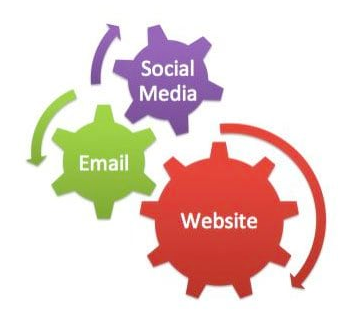
Remember, only if prospects know of your campaign (or see it), can they donate.
Step 6. Track its performance
Tracking the performance of your fundraising efforts is nothing new. For every direct mail campaign you send, I am sure you would’ve measured the cost per dollar raised to check the efficacy of your campaign.
Online campaigns are no different. The campaign metrics you track will let you know how well your campaign is performing. Here are a few metrics that you should be watching.
- The total amount of money raised online: How much of your revenue came from your online campaigns? This number will tell you at a glance whether your pages are performing well.
- Average donation size: On average, how much does each donation bring? Once you know that number, compare it to the standard benchmark in your sector to see how you are faring.
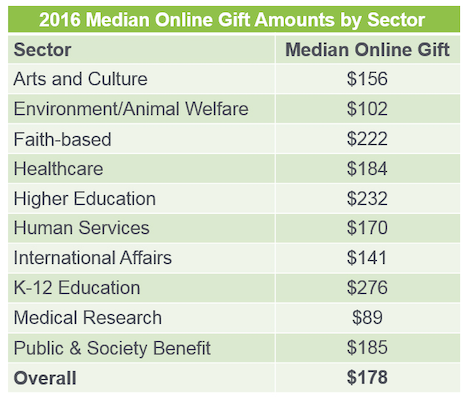
If you are on the lesser side, see how you can tweak your pages so that your donors are encouraged to give more. If you are doing better, well then drop me a note – I want to know :).
- Prior pages visited: How did the donor land on your donation page? If it was a popular blog post or a social media share, see if you can leverage it for other campaigns too. Knowing which page on your site compelled them to seek you out gives you valuable insight into your donor’s reasons to give. You can use it to tweak your fundraising efforts overall.
- The number of new donors won: Did the campaign bring in any new donors? If yes, and if the number is high, then congrats, you have created a campaign that appeals to a new audience and will be invaluable in growing your donor list. If not, it’s back to the drawing board for you, to see how you can tweak this campaign to make it more compelling.
- Donor retention rate: Did any of the previous donors come back? This number is also indicative of your stewardship. If you are doing a great job with donor relations, then the number of recurring donors should be quite high.
- The conversion rate for every page: Of the visitors who land on your page, how many click the “Donate Now” button and complete the transaction? Knowing this number tells you how compelling the donation page is and whether you have to change anything to improve it.
Of course, there are more metrics that you may want to track (for instance, the performance of one campaign vs. another). But a lot of it will depend upon your unique fundraising goals. These few metrics are the absolute must-haves!
As a nonprofit executive, getting started with online fundraising is not as easy as it sounds. When you are already pressed for time and money, using your precious resources on a new venture can seem foolhardy.
However, there are multiple reasons why your efforts would be worth it.
What are the advantages of online fundraising?
Soliciting prospects for funds is nothing new. With online fundraising, you just have one more channel to do it – via the internet instead of a face to face ask.
The reason it is important is because, majority of your donors also prefer to give online. Here is a breakdown of donor preferences, with respect to how they would like to give:
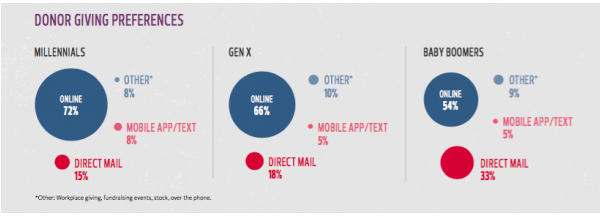
By catering to this preference, you automatically make it easier for our donors to not just give, but choose your organization.
Apart from this, here are a few more advantages of choosing online fundraising in combination with traditional fundraising efforts:
- A larger prospect pool not limited by geography: All your prospects need is access to the internet. They can find you and support you at the click of a button.
- More cost-effective than traditional methods: Even though you do pay a fee for using a fundraising tool, it is way cheaper than what you spend on say, a direct mail campaign.
- Easier to collect donor information: No more shuffling around with forms (and losing donor info). Every time a donor gives his details before paying, it automatically gets recorded.
- Adds to more visibility and awareness to the cause as a whole – Not all prospects who come to your page would donate. That is ok – because they would still talk and share about your cause.
- Enables donors to give easily: The traditional methods of carefully writing a cheque and waiting for it to be credited are not an issue here. Donors can give a lot easier online because:
- Money can be transferred at the click of a button
- They can set up recurring donations that are automated
- Instead of typing how much they want to donate, they can select a prefilled amount to give.
- They do not have to waste time filling a form every time. They can just use pre-saved information to auto-populate the form.
- Can be targeted at the right moment: An online donation can be directed to pop up when the prospect is most likely to give (e.g., right after reading your mission statement). This drastically increases conversions.
- Easy to share the donation page among network: Donors and prospects can easily share the donation page online with their network. They can send the link via WhatsApp or even share it via social media – in just one click. The easier it is to share, the more it will get shared – which means more visibility and conversions for your campaign.
Your turn
Online giving is here to stay. In the past six years, it has steadily grown. Overall online revenue increased by 23% in 2017, accelerating from 15% growth the previous year. By making it easier for donors to donate and simplifying the solicitation process for nonprofits, it has successfully revolutionized fundraising.
This does not mean that you ditch all traditional fundraising methods! Events, calling up your major donors (using robust call center tools), and of course direct mail etc. still work.
The idea is to find a good balance between online and traditional fundraising, so that you can get more from your fundraising efforts.
Hopefully, this post has given you some pointers in that direction. If you need anything more, give me a shout and let me know!


